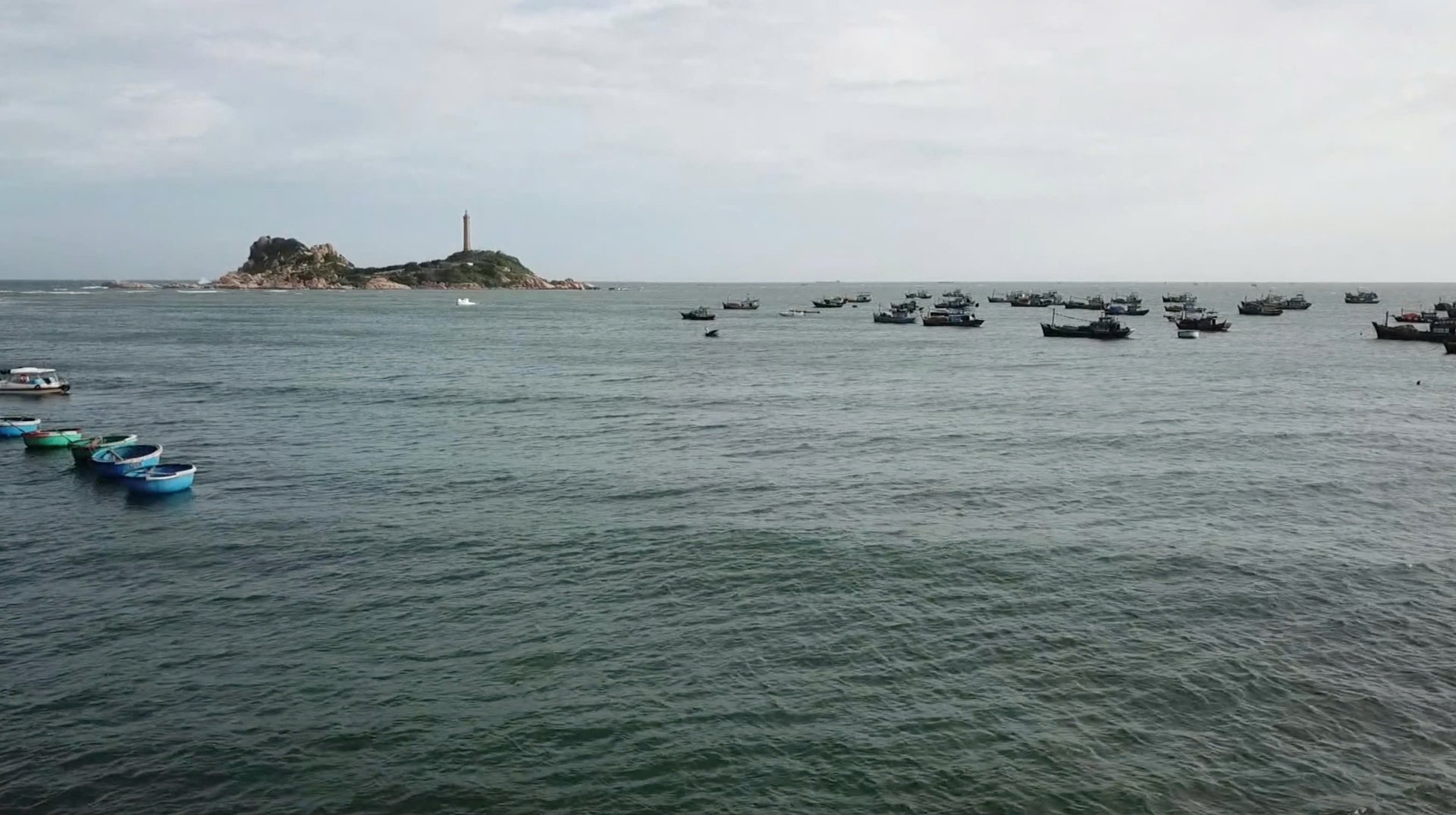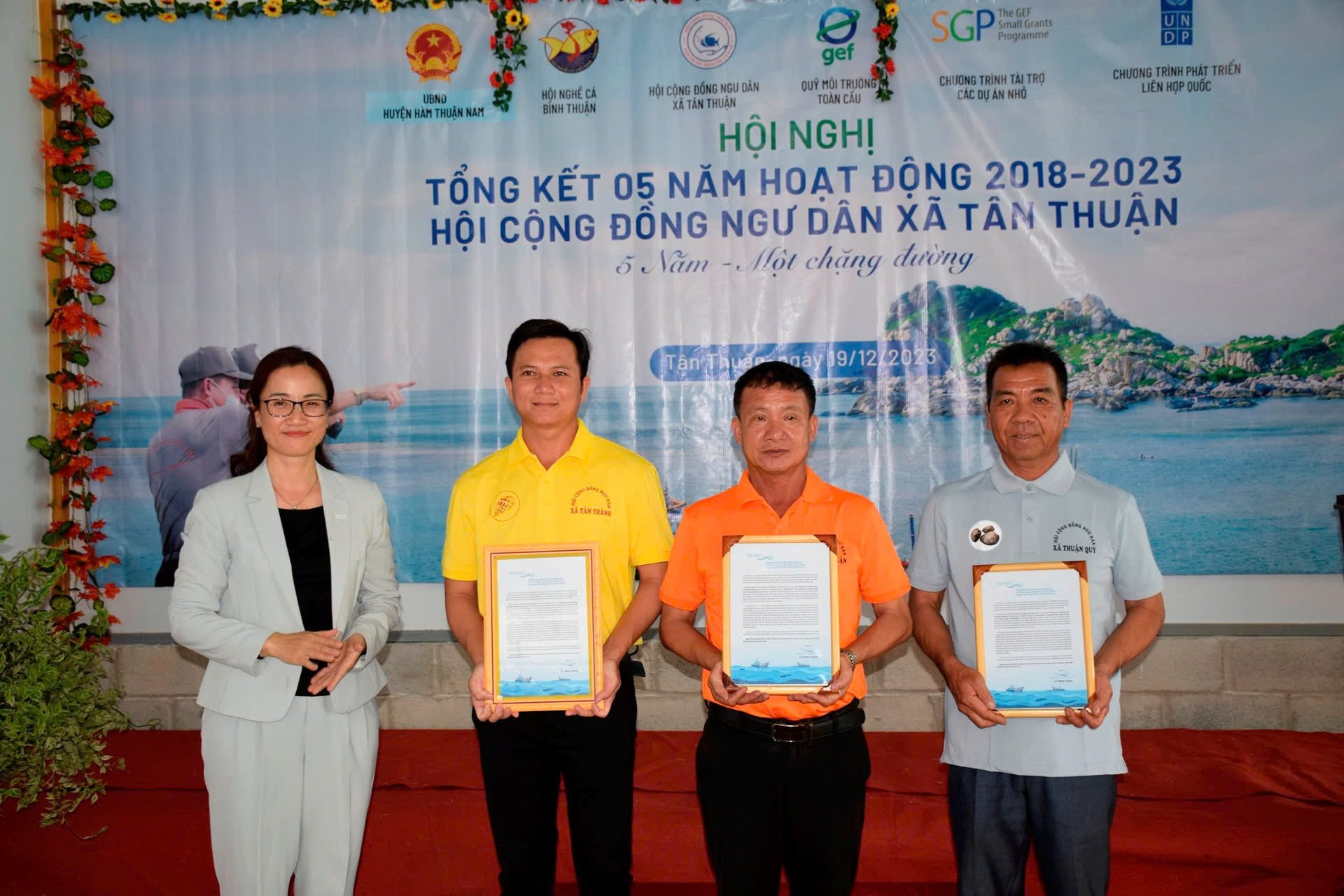December 7, 2025 | 10:28 GMT +7
December 7, 2025 | 10:28 GMT +7
Hotline: 0913.378.918
December 7, 2025 | 10:28 GMT +7
Hotline: 0913.378.918
The first stories of co-management didn’t emerge from textbooks, but from handwritten petitions and heartfelt village meetings. Back then, no legal framework existed, and local communities had little understanding of the law. Policymakers had to sift through case files and wrestle with the gap between policy and practice.
“To truly understand fishers’ concerns, you can’t work just from behind a desk. We went directly to the communities - sitting by their fires, sharing cups of tea, listening to everyday stories. These people never lacked love for the sea; they simply lacked trust and a reason to stay connected to their communities. Once the government officially recognized and invited them in, they joined. But in some places, like Thuan Quy commune, residents even took the initiative to write petitions to form community organizations. That was when their role truly awakened - shifting from passive beneficiaries to active managers of the model,” shared Ms. Nguyen Thi Thu Huyen, National Coordinator of the UNDP/GEF/SGP Small Grants Programme.

The project “Promoting empowerment and capacity building for local communities in the management, protection and sustainable use of marine resources” has established and operated three fisherfolk community organizations engaged in co-management of fisheries resources in accordance with the 2017 Fisheries Law. Photo: Tran Phi.
Based on that foundation, UNDP projects have been implemented through a multidimensional approach, ranging from combating IUU fishing and managing fishing vessels to protecting livelihoods, all with direct impacts on fisherfolk. Among them, the project “Promoting empowerment and capacity building for local communities in management, protection and sustainable use of marine resources” has established and operated three fisherfolk community associations under a co-management model, in line with the orientation of the 2017 Fisheries Law.
“Since the model began operation, community cohesion has grown stronger, and fishing activities have become more regulated, gradually replacing the previous uncoordinated and individualistic practices. In the past, most fishers believed that marine resources were ‘gifts from nature’; now, they’ve started to recognize that these resources are finite and must be preserved,” shared Mr. Huynh Quang Huy, Deputy Director of the Sub-Department of Fisheries and Marine Affairs (under the Lam Dong Department of Agriculture and Environment).
As destructive fishing practices are curbed, the marine environment is gradually restored, and fishery resources begin to regenerate vigorously. In the long term, not only does catch volume increase within protected areas, but the benefits also spill over into surrounding zones, providing momentum for the development of marine ecotourism. The creation of artificial coral reef clusters serves as a “bait” to attract fish and shrimp for gathering and breeding, while effectively preventing trawlers from intruding into nearshore areas.
“The project has helped stabilize livelihoods through sustainable fishing, while also establishing and strengthening a revolving fund that opens up opportunities for new income-generating activities such as community-based tourism. The collective strength of fisherfolk associations has been enhanced, contributing significantly to local government efforts in resource management and conservation, and tightening the link between fishers and regulatory agencies,” Mr. Huy noted.

A representative of the fisherfolk community association receives the Minister’s letter, presented by Ms. Nguyen Thi Thu Huyen (far left). Photo: Quynh Chi.
Through its implementation in the communes of Thuan Quy, Tan Thanh, and Tan Thuan (now consolidated as Tan Thanh commune, Lam Dong), the co-management model for protecting fishery resources has become a “living blueprint” that attracts visits and learning exchanges from other localities both within and beyond the province. Guidance documents, field reports, and feature stories have not only documented species conservation outcomes but also underscored the importance of decentralization, delegation of authority, and shared responsibility between the State and the fisherfolk community.
Building on this foundation, the former Binh Thuan Provincial People’s Committee issued implementation guidelines for co-management in coastal areas. It established district-level steering committees to work closely with the fisherfolk associations. At the national level, the achievements in Tan Thanh – Ham Thuan Nam served as compelling evidence for the inclusion of co-management provisions in the 2017 Fisheries Law and laid the groundwork for Decree 26/2019/ND-CP. The spread of knowledge and practical experience has not only helped refine policy but also paved the way for future mechanisms to support sustainable fishing and safeguard local livelihoods.
According to Mr. Huynh Quang Huy, co-management projects for fishery resources must begin as “small sparks that grow into a blazing fire.” The first step is to define a coastal area that matches the community’s management capacity and to identify key species closely tied to local livelihoods. All activities must be grounded in the actual needs of the people and flexibly adapted to the natural, social, cultural, and customary conditions of each locality and community group. During the design phase, it is essential to anticipate risks, from climate and environmental shifts to economic and policy changes, to develop appropriate response scenarios.
From a policy perspective, Mr. Huy recommends making the most of existing legal provisions while skillfully integrating local programs and sectoral plans. This approach would help generate effective policy directives and ensure close stakeholder coordination.
“The State needs to improve regulations regarding fishing conditions for fishers operating outside co-managed areas. At the same time, fisherfolk community associations must be granted legal status, with the authority to open bank accounts, mobilize and manage resources, and participate in decision-making processes. Only then can collective responsibility truly be strengthened, and the mentality of ‘everyone’s job is no one’s job’ be overcome,” Mr. Huy emphasized.
In this model, the key factor is a dedicated, reputable executive board capable of mobilizing and connecting fishers. Specifically, the internal organization must be clearly structured, with group leaders and coordinators responsible for communication and coordination with community members. These focal points not only help instill discipline in community operations but are also essential for implementing training programs, especially those focused on marine conservation and emergency response at sea.
“In reality, many training programs have been conducted, but local fishers often find them difficult to access due to ineffective delivery methods. A more suitable solution is to ‘hand over’ training content to local fishers themselves, allowing them to teach one another in ways that are both practical and easy to understand. This approach not only fits well with the co-management model but can also be expanded to other fisheries policies, helping reduce costs and improve long-term effectiveness,” Ms. Huyen shared.
Throughout this process, local authorities and socio-political organizations play a vital role in supporting fishers - helping resolve challenges and ensuring smooth coordination among all stakeholders.
In the long term, for the model to truly take root in community life beyond the lifespan of donor-funded projects, it is essential to build and effectively manage community and livelihood funds. These funds should be grounded in local resources, with transparent, stable, and well-defined mobilization mechanisms. Most importantly, formalizing the legal framework for community-based resource management is a key step - enabling people to take greater ownership, assume responsibility, and sustain the model over time.
Translated by Phuong Linh

(VAN) As of 2025, the ASEAN region has a total of 69 ASEAN Heritage Parks recognized across its 10 member states. Among them, Viet Nam contributes 15 ASEAN Heritage Parks.

(VAN) Yok Don National Park has high biodiversity with numerous endemic plant and animal species, and it is also the only dipterocarp forest ecosystem conservation area in Viet Nam.

(VAN) Viet Nam and Brunei signed two important MOUs on fisheries and IUU, expanding cooperation in agriculture, the environment, and Halal exports, aiming to substantively implement joint projects.

(VAN) The Viet Nam Coconut Association worked with the International Finance Corporation (IFC) and businesses to promote the supply chain, enhance competitiveness, and develop the coconut industry sustainably.
![Hue aims for Net Zero: [2] Pioneering low-emission tourism](https://t.ex-cdn.com/nongnghiepmoitruong.vn/608w/files/huytd/2025/12/04/0633-dulichzero-4-095634_236-161125.jpg)
(VAN) The ancient capital of Hue has developed Net Zero tourism products and models, aiming to reduce carbon emissions and pioneer the establishment of Viet Nam's green tourism destination.

(VAN) C.P. Viet Nam has announced the successful completion of its goal to plant 1.5 million trees during the 2021-2025 period, a key milestone within company's long-term ESG strategy and its roadmap for emission reduction.

(VAN) This is an initiative of MAE aimed at creating a unified coordination mechanism to implement agricultural cooperation programs with developing countries.